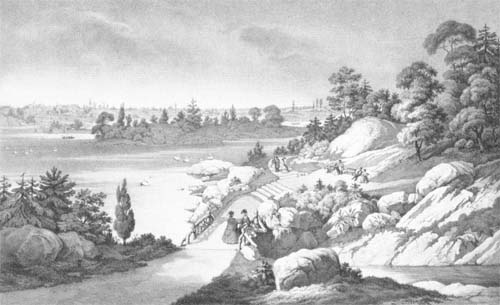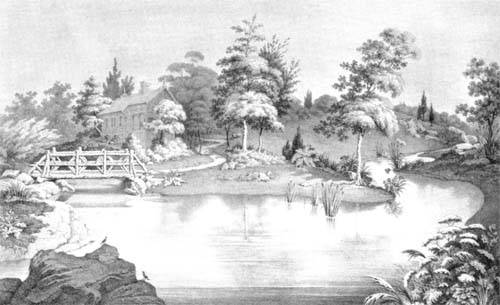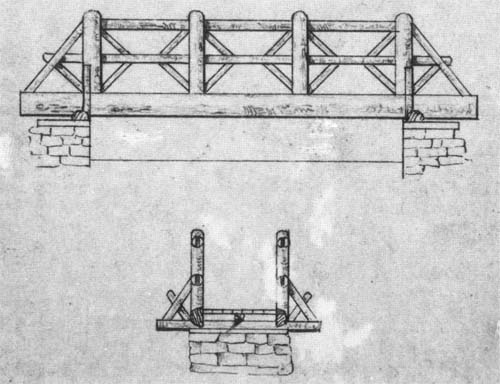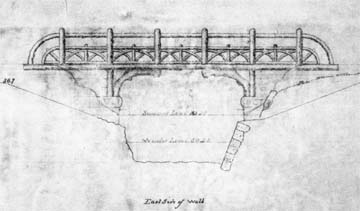The bridges of Central Park are basically of two classes. The transverse road bridges fall into one category. They were built solely for utility, not intended to be seen or to be conspicuous in the park. Their principal feature in the overall design is that of being screened from observation from the park. The second category, which Olmsted and Vaux called the ornamental bridges or archways, is found along the drives, the bridle paths, and foot paths. Each one is of a unique design. The facings of these bridges are of specially selected stone, brick, and decorative iron work, as detailed in this book.
There is yet another category, the rustic bridges, those mostly of wood which cross over streams. They were originally built of rough, durable timber in its natural state -- red cedar, sassafras, and oak. For example, there are two wood bridges on the Gill that flows west through the Ramble. The one at the foot of the stream at the Lake (original bridge number 21, Gill Bridge) has been destroyed as a result of vandalism and rebuilt a good number of times over the years. Only in its latest restoration by the Central Park Conservancy has it been given the railings of contorted branches considered essential in the Romantic era for a bridge in a picturesque park. The Gill's other bridge (which had no original bridge number) is well within the Ramble at the top of the slope to the east. Rebuilt in the 1970s by the carpentry staff of the Parks Department, under the late William Hillman, it does not have the twisted branches of the bridge at the foot of the stream. Here, old wood parkway lampposts were the source of the lumber. The enterprising head of the staff obtained the well-seasoned wood when the lampposts were being replaced by galvanized steel posts. If the straight timber is hardly picturesque, it is solid and seasoned, with the result that it has lasted almost two decades.
Two similar bridges are to be seen over Montayne's Rivulet in the north end of the park (original bridge number 31, east of Glen Span, which had no name, and original bridge number 32, west of Glen Span, called Loch Bridge.) Again, Department carpenters rebuilt them of wood from the same source. One curiosity nearby is seen in the partly ruined small bridge (original bridge number 30, called Cascade Bridge) over the run-off stream that drains the North Meadow, flowing northerly from beneath Springbanks Arch into Montayne's Rivulet.
Visitors would have found another rustic bridge, in early years, over the western arm of the Lake at the Ladies' Pond (original bridge number 22, shown above). The Pond was filled in for a playground in the mid-1930s. All that remain today of the bridge are planks of wood over a gulley. (See maps which show the Ladies Pond, the playground, and the location of the old rustic bridge.)

Gill Bridge. Original bridge no. 21, construction date 1860. "View of the Bridge at the Outlet of the Spring." G. W. Fasel. Lithograph. 1802.

Rustic bridge in Ramble. No original bridge number. Construction date, 1860. Original drawings.
Municipal Archives.

Rustic bridge in Ramble. No original bridge number. Construction date, 1860. Original drawings.
Municipal Archives.





